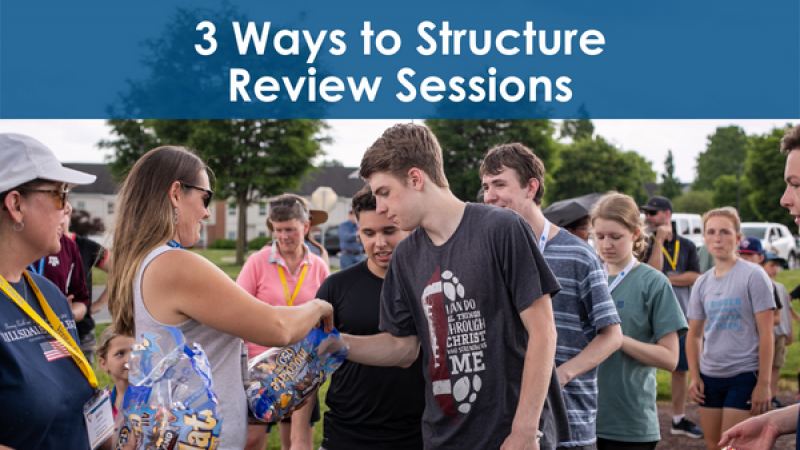Omnibus | Three Ways to Structure Review Sessions

We all want our students to do well on assessments. We at least want to avoid being the cause of our students not doing well on assessments. Facing challenges like major tests, midterms, and finals can help to prepare our students for future academic endeavors. More than that, however, these “trials” can be great opportunities to train the virtues of our students and help them have confidence and discipline to face the challenges of their lives.
Of course, virtue is not the only outcome of study. We can learn vice as well. The virtue that students should be pointed toward when studying is constancy (i.e., regular preparation) that culminates in a final review that sets facts and ideas in place and that provides the students with well-founded confidence headed into a test. The main vice-habit that plagues students is the “coast and cram” strategy where students pay as little attention as possible until the night before the test and then you stay up all night cramming as much as you can in your mind so that you can dump it all out on the test. Often, this method does not lead to learning much of anything and almost always fails to provide mastery.
John Milton Gregory in The Seven Laws of Teaching calls for an astounding amount of review, but how can the “review-habits” of our classes encourage virtues of constancy, discipline, and excellence and discourage vice of “coast and cram”? Here are three ways:
1. Make review the regular beginning of class—especially discussions
The first, best way we can train our students to review is to actually review material with them regularly. When I am having an Omnibus discussion, I often begin the class with this question, “So where are we and what did we learn in yesterday’s discussion?” I can make the review as wide-ranging as possible by going all the way back to the beginning of the book or focusing on an important concept learned recently. This regularity helps to cement the content you are studying in the minds of your students.
Use this time to make sure that students are comprehending the material. Don’t let one talkative or knowledgeable student dominate this time. I try to get every student in the discussion involved in this class-starting review.
2. The Two-Edged Sword of the Study Guide
“Is that going to be on the test?” If you are like me, that is the last question I want my students to ask. It almost seems like blasphemy. Students tend to be like you and I, however. When we have an important test and limited time to prepare, we want to prepare most effectively. Students want that too. I really try to avoid producing study guides, because I think it encourages the cramming that I want students to avoid. I teach seniors. Were I teaching 7th or 8th graders I might use study guides—particularly in the beginning of the year or when we study very challenging material. Omnibus can feel like a mountain for a 7th grade boy who might not be the most literary. The study guide can be a life-line for this student. We want this student to grow both academically and toward the virtue of constancy and discipline, so the life-live study guide 7th grade might turn into the cram-enabler of 11th or 12th grade.
3. An All Class Review Before Major Tests
When you are having a major test, I set aside a day to review. You can do this by providing a study guide or a list of questions that students can explore individually or in small groups. (As an aside, small groups are both the most and least effective ways to learn. Two students committed to learning can really move the ball down the field. Two or four students looking to avoid studying can actually somehow go backwards or waste the review time set aside to help.) I often like to play Jeopardy with the entire class. I will put categories on the board and a grid in which each column has the name of the column at the top and then boxes beneath saying: 100, 200, 300, 400, 500. I either write out the questions or simply make them up on the spot. I would already have made up the test. In this way, I can know that every student heard some of the main important points the day before the test. I usually ask the question and the class has a book in front of them on their table or desk. When I finish, the first one to slap the book gets the first opportunity to answer. If they get the right answer, they get to add the amount of points corresponding to the question that they answer. To have extra fun with this I usually mix in a few random categories like: Starts with X, or Domestic Waterfowl. You can also play this in teams which can be really fun, but it can also lead to some people being less focused.
Tests test us (duh!), but the student who reviews building up constancy, discipline, and excellence is succeeding in becoming the person that the test is calling them to be. They are being prepared to face bigger more important tests in the future.






